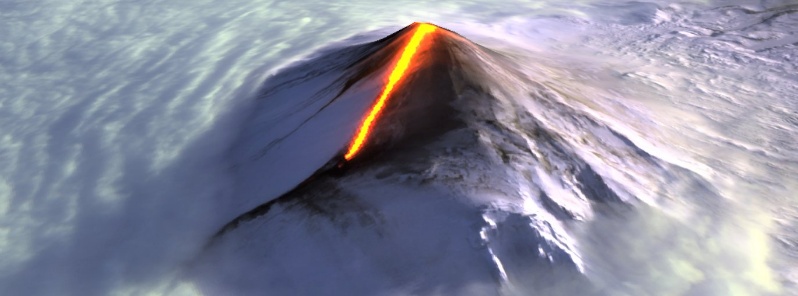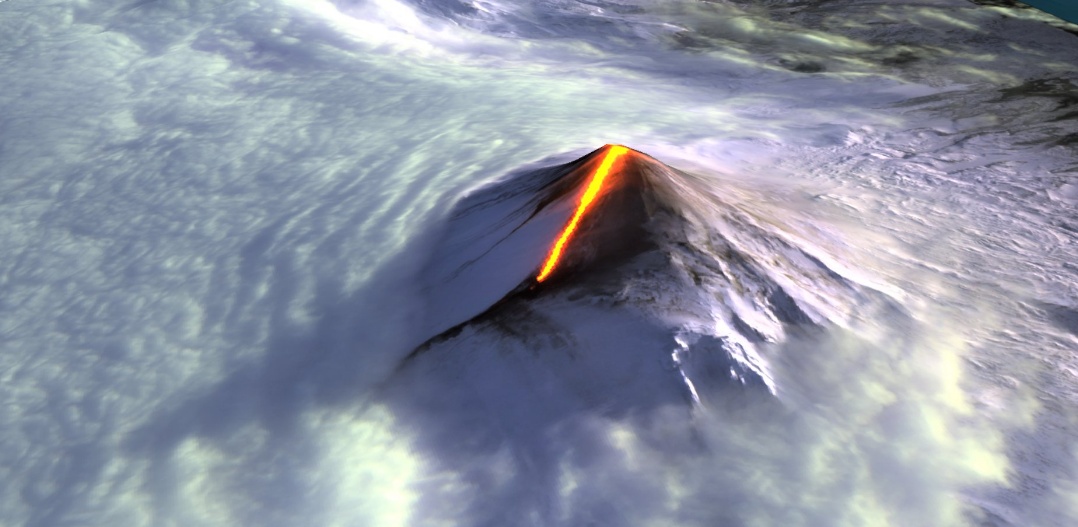Sentinel-2 provides evidence of increasing eruptive activity at Mt. Shishaldin, Alaska

The eruption of Shishaldin Volcano that began in late July continues with low-level explosive activity near the summit and effusion of short lava flows, tha Alaska Volcano Observatory (AVO) reports.
Elevated seismicity and surface temperatures were recorded throughout the past week while satellite images on December 25 and 26 confirmed an active lava flow extending ~1.5 km (1 mile) to the northwest and tephra deposits on the upper flanks of the volcano. Weak explosions were detected on a regional infrasound network on December 26 and 27.

Shishaldin volcano on December 26, 2019. Credit: ESA/Sentinel-2, Antonio Vecoli

Lava flow on Shishaldin volcano on December 26, 2019. Credit: ESA/Sentinel-2, Antonio Vecoli
This year's eruption has thus far produced lava flows, pyroclastic flows, and lahars (mudflows) on the flanks of the volcano. For most of the current eruption, ash emissions have been restricted to the immediate vicinity of the volcano and altitudes below 4.5 km (15 000 feet) above sea level.
"During this heightened level of activity more powerful explosions could occur with little warning and produce higher ash clouds that may pose a hazard to aircraft," AVO noted.
Geological summary
The beautifully symmetrical volcano of Shishaldin is the highest and one of the most active volcanoes of the Aleutian Islands. The 2857-m-high (9 379 feet), glacier-covered volcano is the westernmost of three large stratovolcanoes along an E-W line in the eastern half of Unimak Island.
The Aleuts named the volcano Sisquk, meaning "mountain which points the way when I am lost." A steady steam plume rises from its small summit crater. Constructed atop an older glacially dissected volcano, it is Holocene in age and largely basaltic in composition.
Remnants of an older ancestral volcano are exposed on the west and NE sides at 1 500 -1 800 m (4 920 – 5 900 feet) elevation. There are over two dozen pyroclastic cones on its NW flank, which is blanketed by massive aa lava flows.
Frequent explosive activity, primarily consisting of strombolian ash eruptions from the small summit crater, but sometimes producing lava flows, has been recorded since the 18th century. (GVP)
Featured image credit: ESA/Sentinel-2, Antonio Vecoli

Beautiful shots.